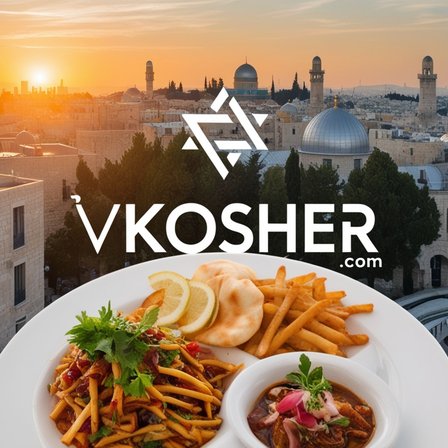Kosher in the New York Times Crossword: A Cultural and Linguistic Journey
The New York Times Crossword is more than just a daily puzzle; it is a cultural institution that reflects the evolving language, trends, and values of its time. Among the myriad of topics and clues that have graced its grids, "kosher" holds a unique place. The concept of kosher, rooted in Jewish dietary laws, extends far beyond its religious connotations when it appears in the crossword. Its inclusion in the New York Times Crossword reflects both the deep-seated cultural significance and the broader metaphorical applications of the word.
Kosher: Beyond Dietary Laws
In its most traditional sense, kosher refers to foods that conform to the regulations of kashrut, the Jewish dietary laws. These laws dictate which foods are permissible and how they must be prepared and consumed. For a food item to be kosher, it must meet certain criteria, such as the type of animal from which it is derived, the way in which it is slaughtered, and the absence of mixing meat and dairy.
However, the term kosher has permeated popular culture, taking on meanings that transcend its original religious context. In everyday language, kosher is often used metaphorically to describe something that is legitimate, acceptable, or in accordance with the rules. This broader usage has made kosher a fitting candidate for inclusion in the New York Times Crossword, where language is often played with in creative and unexpected ways.
The Appearance of Kosher in the Crossword
The New York Times Crossword has long been known for its clever and sometimes challenging clues. When kosher appears in the crossword, it often does so with a twist, playing on the word’s dual meanings. A clue might reference the traditional dietary laws, but just as likely, it could hint at something being above board or legitimate.
For example, a clue like "Fit to eat, according to Jewish law" would straightforwardly point to the traditional meaning of kosher. On the other hand, a clue such as "On the up and up" might use kosher in its more colloquial sense. This duality not only adds to the puzzle's complexity but also reflects the broader cultural significance of the word.
Cultural Representation and Sensitivity
The inclusion of words like kosher in the New York Times Crossword is a testament to the puzzle’s role as a mirror of cultural and linguistic trends. However, it also highlights the importance of cultural sensitivity in word choice and clue construction. As crossword puzzles are a form of entertainment consumed by a diverse audience, constructors must be mindful of how they represent different cultures and religious practices.
The New York Times Crossword has a long history of engaging with cultural and religious references, but it has also faced criticism at times for insensitive or stereotypical representations. The word kosher, while generally considered benign, still requires thoughtful cluing to ensure that it is used in a way that respects its origins and significance.
The Evolution of Kosher in Language
The use of kosher in the New York Times Crossword also reflects the broader evolution of the word in the English language. Originally a strictly religious term, kosher has undergone a semantic shift, becoming part of the everyday lexicon. This shift mirrors broader changes in society, where religious and cultural terms often take on new meanings as they become integrated into the mainstream.
In the crossword, this evolution is apparent in the variety of clues that kosher can generate. The word's versatility allows it to be used in different contexts, from straightforward definitions to more abstract, metaphorical uses. This linguistic flexibility is part of what makes the New York Times Crossword both challenging and enjoyable, as solvers must navigate the layers of meaning that words like kosher can carry.
Kosher as a Reflection of Identity
The appearance of kosher in the New York Times Crossword can also be seen as a reflection of identity. For Jewish solvers, seeing kosher in the puzzle can evoke a sense of cultural pride and recognition. It serves as a reminder that their heritage is acknowledged and valued in this iconic puzzle. For non-Jewish solvers, it offers an opportunity to engage with and learn about Jewish culture, even in a small way.
The New York Times Crossword has a unique ability to bring together people from different backgrounds through the shared experience of solving a puzzle. In this context, the word kosher becomes more than just a clue; it becomes a bridge between cultures, fostering understanding and connection.
The Role of the Crossword in Language Preservation
The New York Times Crossword plays an important role in preserving and promoting language. By including words like kosher, the puzzle helps to keep these terms alive in the public consciousness. It ensures that even as language evolves, certain words retain their relevance and continue to be understood by new generations.
In the case of kosher, its inclusion in the crossword helps to maintain awareness of Jewish dietary laws and cultural practices, even among those who may not be familiar with them. This is particularly important in a world where cultural knowledge can sometimes be lost or diluted over time. The crossword serves as a repository of cultural and linguistic knowledge, preserving these traditions in a fun and engaging way.
The Future of Kosher in the Crossword
As language continues to evolve, so too will the use of words like kosher in the New York Times Crossword. The puzzle is constantly adapting to reflect new trends, ideas, and cultural shifts. While kosher has become a staple in the crossword, its cluing will likely continue to evolve, offering solvers fresh and interesting challenges.
Looking forward, it is likely that kosher will continue to be used in both its traditional and metaphorical senses, depending on the creativity of the crossword constructors. The challenge for solvers will be to stay attuned to the nuances of language and culture, as these will be key to unlocking the puzzles that lie ahead.
Conclusion
Kosher in the New York Times Crossword is more than just a word; it is a symbol of cultural significance, linguistic evolution, and the intricate dance between tradition and modernity. Its inclusion in the crossword reflects the puzzle’s role as a cultural touchstone, where language, identity, and creativity intersect. As solvers continue to engage with the puzzle, kosher will undoubtedly remain a beloved and challenging element, offering a glimpse into the rich tapestry of language and culture that the New York Times Crossword so masterfully weaves together.
The New York Times Crossword is more than just a daily puzzle; it is a cultural institution that reflects the evolving language, trends, and values of its time. Among the myriad of topics and clues that have graced its grids, "kosher" holds a unique place. The concept of kosher, rooted in Jewish dietary laws, extends far beyond its religious connotations when it appears in the crossword. Its inclusion in the New York Times Crossword reflects both the deep-seated cultural significance and the broader metaphorical applications of the word.
Kosher: Beyond Dietary Laws
In its most traditional sense, kosher refers to foods that conform to the regulations of kashrut, the Jewish dietary laws. These laws dictate which foods are permissible and how they must be prepared and consumed. For a food item to be kosher, it must meet certain criteria, such as the type of animal from which it is derived, the way in which it is slaughtered, and the absence of mixing meat and dairy.
However, the term kosher has permeated popular culture, taking on meanings that transcend its original religious context. In everyday language, kosher is often used metaphorically to describe something that is legitimate, acceptable, or in accordance with the rules. This broader usage has made kosher a fitting candidate for inclusion in the New York Times Crossword, where language is often played with in creative and unexpected ways.
The Appearance of Kosher in the Crossword
The New York Times Crossword has long been known for its clever and sometimes challenging clues. When kosher appears in the crossword, it often does so with a twist, playing on the word’s dual meanings. A clue might reference the traditional dietary laws, but just as likely, it could hint at something being above board or legitimate.
For example, a clue like "Fit to eat, according to Jewish law" would straightforwardly point to the traditional meaning of kosher. On the other hand, a clue such as "On the up and up" might use kosher in its more colloquial sense. This duality not only adds to the puzzle's complexity but also reflects the broader cultural significance of the word.
Cultural Representation and Sensitivity
The inclusion of words like kosher in the New York Times Crossword is a testament to the puzzle’s role as a mirror of cultural and linguistic trends. However, it also highlights the importance of cultural sensitivity in word choice and clue construction. As crossword puzzles are a form of entertainment consumed by a diverse audience, constructors must be mindful of how they represent different cultures and religious practices.
The New York Times Crossword has a long history of engaging with cultural and religious references, but it has also faced criticism at times for insensitive or stereotypical representations. The word kosher, while generally considered benign, still requires thoughtful cluing to ensure that it is used in a way that respects its origins and significance.
The Evolution of Kosher in Language
The use of kosher in the New York Times Crossword also reflects the broader evolution of the word in the English language. Originally a strictly religious term, kosher has undergone a semantic shift, becoming part of the everyday lexicon. This shift mirrors broader changes in society, where religious and cultural terms often take on new meanings as they become integrated into the mainstream.
In the crossword, this evolution is apparent in the variety of clues that kosher can generate. The word's versatility allows it to be used in different contexts, from straightforward definitions to more abstract, metaphorical uses. This linguistic flexibility is part of what makes the New York Times Crossword both challenging and enjoyable, as solvers must navigate the layers of meaning that words like kosher can carry.
Kosher as a Reflection of Identity
The appearance of kosher in the New York Times Crossword can also be seen as a reflection of identity. For Jewish solvers, seeing kosher in the puzzle can evoke a sense of cultural pride and recognition. It serves as a reminder that their heritage is acknowledged and valued in this iconic puzzle. For non-Jewish solvers, it offers an opportunity to engage with and learn about Jewish culture, even in a small way.
The New York Times Crossword has a unique ability to bring together people from different backgrounds through the shared experience of solving a puzzle. In this context, the word kosher becomes more than just a clue; it becomes a bridge between cultures, fostering understanding and connection.
The Role of the Crossword in Language Preservation
The New York Times Crossword plays an important role in preserving and promoting language. By including words like kosher, the puzzle helps to keep these terms alive in the public consciousness. It ensures that even as language evolves, certain words retain their relevance and continue to be understood by new generations.
In the case of kosher, its inclusion in the crossword helps to maintain awareness of Jewish dietary laws and cultural practices, even among those who may not be familiar with them. This is particularly important in a world where cultural knowledge can sometimes be lost or diluted over time. The crossword serves as a repository of cultural and linguistic knowledge, preserving these traditions in a fun and engaging way.
The Future of Kosher in the Crossword
As language continues to evolve, so too will the use of words like kosher in the New York Times Crossword. The puzzle is constantly adapting to reflect new trends, ideas, and cultural shifts. While kosher has become a staple in the crossword, its cluing will likely continue to evolve, offering solvers fresh and interesting challenges.
Looking forward, it is likely that kosher will continue to be used in both its traditional and metaphorical senses, depending on the creativity of the crossword constructors. The challenge for solvers will be to stay attuned to the nuances of language and culture, as these will be key to unlocking the puzzles that lie ahead.
Conclusion
Kosher in the New York Times Crossword is more than just a word; it is a symbol of cultural significance, linguistic evolution, and the intricate dance between tradition and modernity. Its inclusion in the crossword reflects the puzzle’s role as a cultural touchstone, where language, identity, and creativity intersect. As solvers continue to engage with the puzzle, kosher will undoubtedly remain a beloved and challenging element, offering a glimpse into the rich tapestry of language and culture that the New York Times Crossword so masterfully weaves together.




